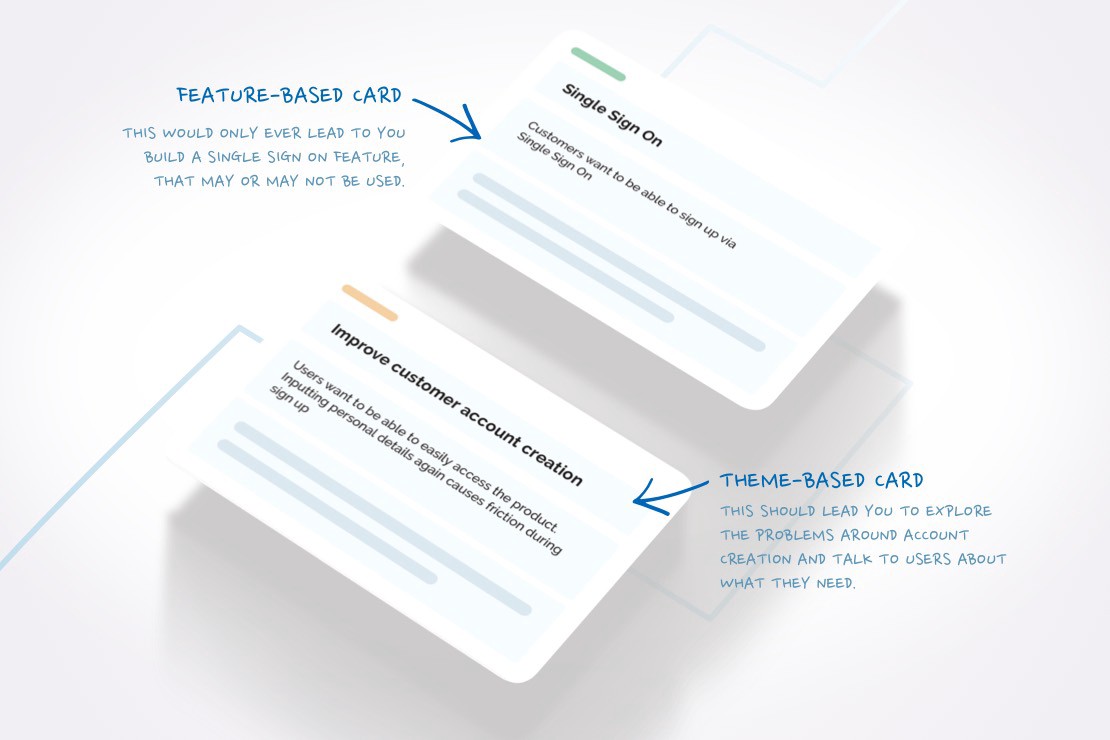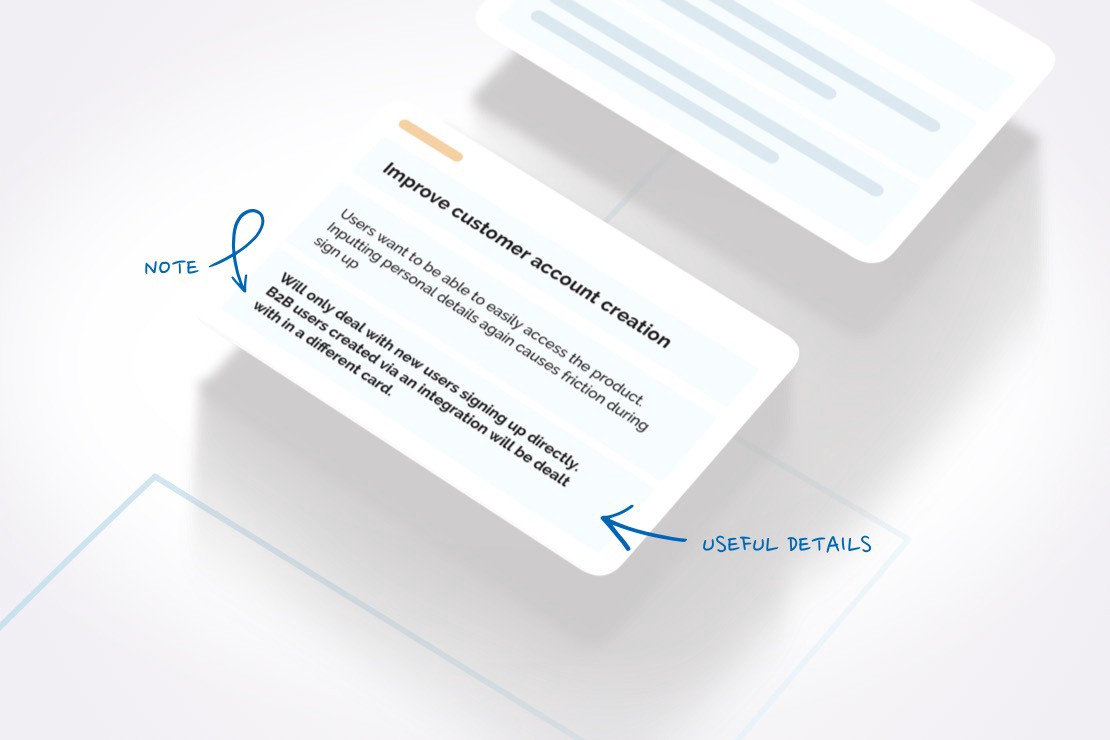How to Create a Product Roadmap Your Stakeholders Will Actually Use
The more conceptual and thematic a roadmap gets, the more difficult it becomes for the rest of the business to use. So how can you create a product roadmap that’s useful to both product teams and business stakeholders?

Updated: November 2023 “Where does this fit in the roadmap?” is a classic question that every product manager will face in their career. From marketing, to engineering, to senior leadership – there are so many stakeholders that rely on product timelines to inform key business decisions. Roadmaps are an essential tool of communication to keep all teams aligned on end goals and product strategy.
But product roadmaps aren’t simple to create because they need to meet the needs of different teams simultaneously. While dates and deadlines are useful for business leaders, they don’t reflect the way product teams actually work. Features and deadlines are ever-changing and can quickly become out of date. However, without any sense of timing, stakeholders can’t use the roadmap to inform their business plans.
So how can you create a product roadmap that is useful to both product teams and business stakeholders?
Theme-Based Roadmapping
To address the pitfalls in traditional product roadmapping, a new approach has emerged that focuses on “themes” rather than arbitrary timelines. Some core principles of this approach are:
- Avoid giving specific dates on the roadmaps
- Don’t present a feature list or backlog ordered by priority
- The roadmap should be ‘agile’ and used as a living document
- Keep everything as high-level as possible
While theme-based product roadmaps are easier for product managers to create and utilize, they don’t always meet the needs of business stakeholders. Themes can quickly become confusing when people infer their own solutions and ideas from them. The more conceptual and thematic a roadmap gets, the more difficult it becomes for the rest of the business to use.
So is there a better way?
The Hybrid Approach
To leverage the best aspects of both traditional and theme-based roadmapping, I recommend using priority labels with themes that are built upon customer needs. This hybrid approach will better meet the needs of product teams and business stakeholders alike.
Here are some guiding principles:
1- Set Expectations
Before creating a roadmap, think about why you’re doing it. Much like a product, you need to identify the target user and the problem you’re trying to solve for them.
Remember that the roadmap needs to serve multiple groups with different mindsets. Business stakeholders tend to like commitments and hard deadlines, while product managers have to embrace uncertainty. Friction can come from different teams wanting different things from the roadmap.
The roadmap should be a representation of the direction your product is heading in, but it can’t be all things to all people. It cannot be a release plan, a source of product documentation, and a tool for planning headcount. These things are important, but they shouldn’t be part of the roadmap.
To avoid any misunderstanding about the goal of your roadmap, be clear about what needs it can and cannot fulfill.
2- Use “Next, Now, Later” Timing
Your roadmap is not meant to be a release plan. Your roadmap should show the priorities of the business, but that doesn’t mean it’s tied to specific and inflexible dates. However, without a timeline, the roadmap becomes more difficult for stakeholders to understand.
One solution is “now, next, later” labels to indicate priority – but this requires context for the reader. Think of the ‘now’ column as six weeks or even a quarter, and the ‘next’ column to be the next two quarters. Later then becomes anything more than two quarters away.
With this approach, business stakeholders can relate to the roadmap and work out how it fits into their plans. It sets an expectation and helps people use the roadmap, without them needing to ask or guess about the timelines. And it also enables the product team to be flexible with timing.
3- Generate Themes Based on Customer Needs
Thematic roadmaps are tricky because sometimes they aren’t well defined. Not quite an epic, not exactly a problem statement – essentially a theme is a grouping of product features that all fit together. One effective way to use themes is to group items according to customer needs or problems.
For example, instead of including ‘Implement Single Sign On’ on the roadmap, you should create a theme around customer account creation. This is because Single Sign On is one of many solutions to help customers create their accounts. And if you’re focused on building Single Sign On, you might miss the real issues that customers have within the broader theme of account creation.

4- Contextualize and Communicate
If people can’t understand how the roadmap affects their work, then it won’t be helpful to them. To help business stakeholders contextualise the roadmap, it’s important to add more detail than just a problem or a theme. Here’s an example of useful detail that could be included on your roadmap theme, ‘Improve customer account creation:’

Additionally, when writing your roadmap, use simple, non-technical language that is easy for different teams to understand. This could be in the form of a user story or a list of what you do and don’t expect to tackle in the item. But be realistic with the level of detail - you may not be able to add a high level of detail for themes that are far out in time, and that’s fine.
Be sure to keep all stakeholders aware of changes, which are inevitable. When you first launch a roadmap, it represents a snapshot in time. But your roadmap isn’t a snapshot - it’s a living, breathing document. It’s important to effectively communicate about what has changed, and almost more importantly, why. Include a change log or ‘what’s new’ section in your document to help readers stay informed about what’s changed, which will result in less friction and fewer questions.
And as an added benefit, frequent communication with different teams about the roadmap will give you a chance to see how your roadmap is being used by the wider business and what the impact is.
If a roadmap is only based around what the product team wants to show, then only the product team will use it. By including information that is easily understood by different stakeholders, the product roadmap will be more effective for everyone. Once you stop creating a roadmap only for the product team - you’ll create a roadmap to improve your product.
